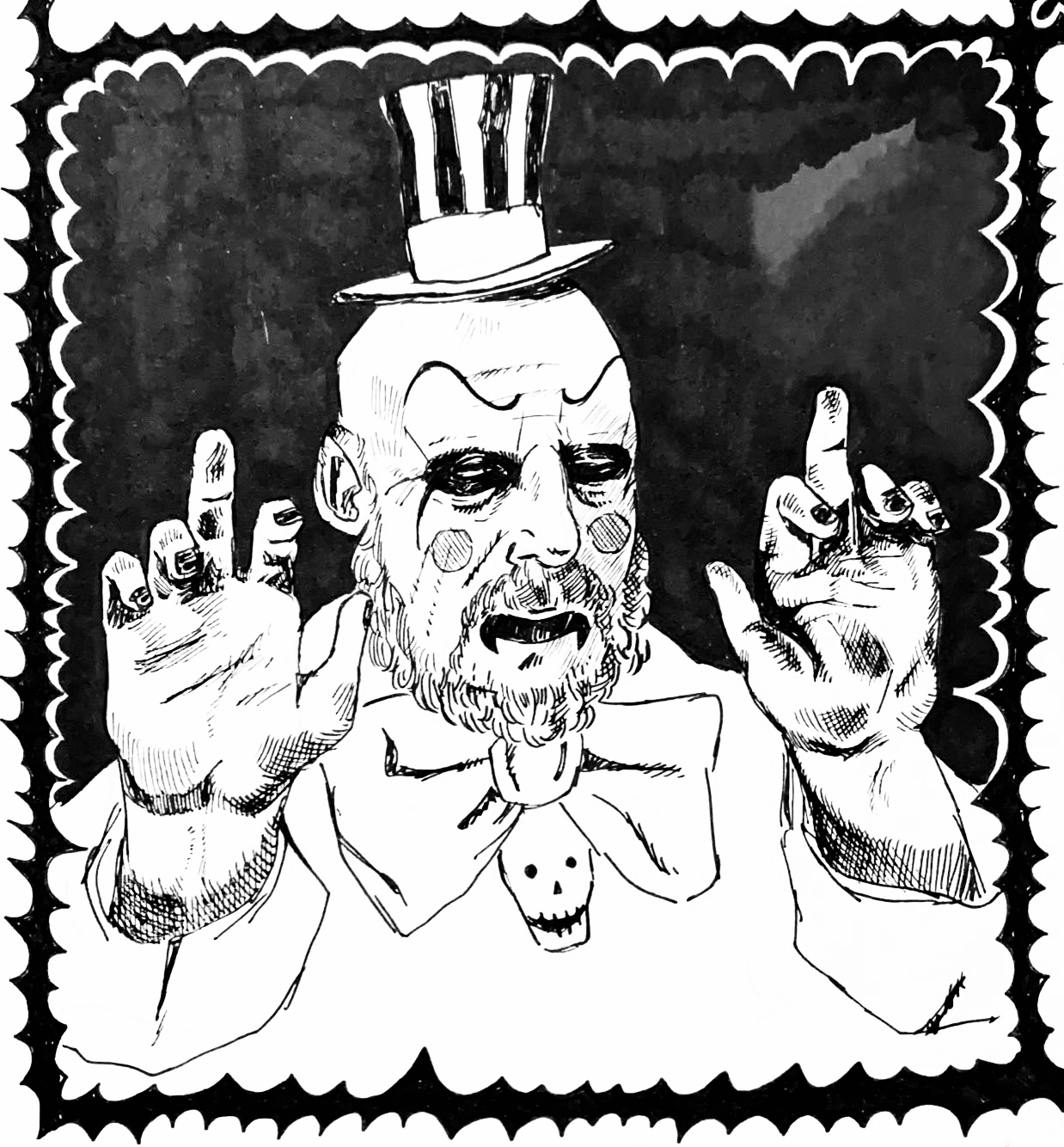Why all the fuss over clowns? I've never found them particularly scary. In fact, one of my fondest memories was attending a proper big-top circus as a kid, and being pulled from the crowd at random to assist a clown with a magic trick. For my efforts, after the show I was gifted a large stuffed lion toy in a jester's costume, whom I still have to this day.
Sirky the Lion
A pretty interesting paper by P. Tyson, S. K. Davies, S. Scorey, and W. Greville (published earlier this year (2023) and obviously so already well-referenced as to be on the top page of Google results for the term 'coulrophobia') found a fear of clowns to predominantly relate to fear of unpredictability in emotion and intent, as well as media influences.
This is to say, that the fact that clowns wear face paint showing an exaggerated expression which they might not truly feel, as well as their pantomimic delivery and body language, is what creeps people out, in no small part because these are the attributes most abused by horror media in which clowns play a villainous role.
Take for example Pennywise the Dancing Clown from Stephen King's 1986 horror novel 'It' and its multiple film and television adaptations), or the clown doll from Tobe Hooper's 1982 film 'Poltergeist'. Neither are actually clowns: Pennywise is a cosmic shapeshifting entity that only takes the appearance of a clown in order to lure his desired prey of children, and the clown doll (which, ok, is technically a clown), is actually possessed by a supernatural entity implied to be the devil. In both cases, the two most obvious examples of horror's 'scary clowns', the fear comes from the idea that there may be more than meets the eye under their painted exteriors.
The clown doll ('Poltergeist' (1982) dir. Tobe Hooper)
You can probably see where I'm going with this and how it aligns with the aims that I set out to meet when I began experimenting with make-up. Clowns, or at least horror's vision of the clown, were my next source of inspiration.
Pennywise (left) played by Bill Skarsgard in the Andy Muschietti 'It' (2017) and 'It Chapter Two' (2019) and Pennywise (right) played by Tim Curry in the ABC miniseries 'It' (1990).
Outside of horror, clowns have been notable in my life in two ways. For one, there was the 2016 'killer clown craze': what initially started as a viral marketing stunt for Adam Krause's 2016 short film 'Gags' (about a scary clown of the same name) caused panic, and a slew of imitators wanting to get in on the fun. Cue creepy and threatening clowns popping up all over America. In the UK, it was a lot of fun to see teenage boys don puffer jackets and cheap rubber clown masks and go to parks late at night with cricket bats to chase mostly other teenagers around. I speak from experience: clown-hunting was how me and my friends got our kicks in 2016. Kicks sometimes literally, as these British clowns were no joke, and often ran after us with all manner of weaponry. Good times. Adam Krause made a feature-length 'Gags' movie in 2018.
A tiny Gags the Clown
On the complete other side of the spectrum, around 2019 (though I can't date this with certainty), I began to take note of a 'genderless clown' look that was popping up on social media. Gaudy plastic jewellery, bright hair and clothing (often purposefully mismatched), stickers, kidcore, and red cheeks and noses were what I developed an admiration for. At the time, I was going by they/them pronouns and liked the look of 'genderless clowns' because it was one of my first introductions to defining gender (or lack thereof) by abstract concepts.
Hey, I'll throw out another one that I've just thought of. The Killer Klowns from outer space! They're also technically not clowns- they're aliens that are implied to have been the inspiration for humanity's whole clown thing. We invented clowns based on sightings of these silly little creatures, according to the film.
The Killer Klowns ('Killer Klowns from Outer Space' (1988) dir. S. Chiodo, C. Chiodo, and E. Chiodo)
However, my true horror love lies in fictional clowns who are just clowns because that's their job, and the fact that they are evil and violent people is besides the point. That's the good stuff. Two characters come to mind: the man sometimes known as 'Cutter', Johnny Lee 'Captain Spaulding' Johns, and Art the Clown.

Art the Clown ('Terrifier' (2016) and 'Terrifier 2' (2022) dir. Damien Leone)

Captain Spaulding (specifically in 'House of 1000 Corpses' (2003) dir. Rob Zombie)